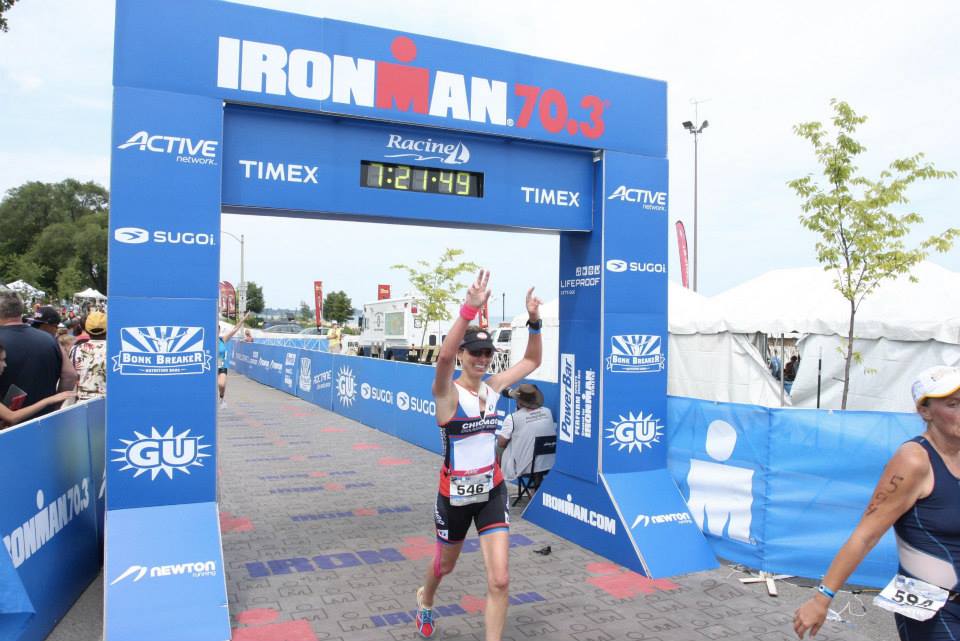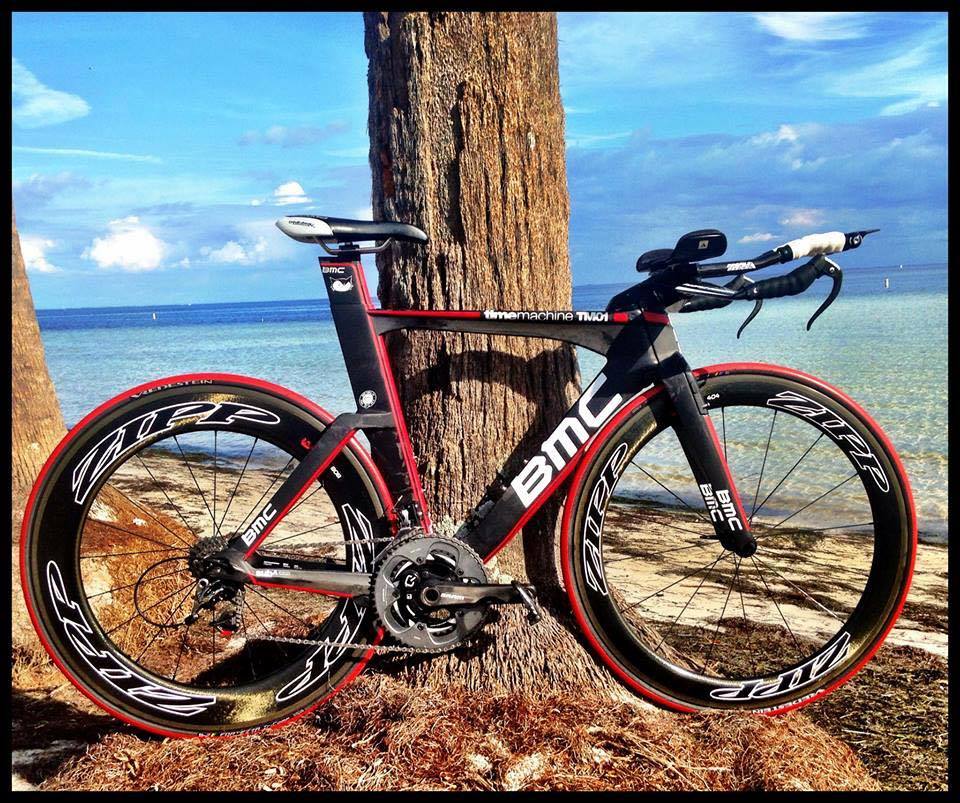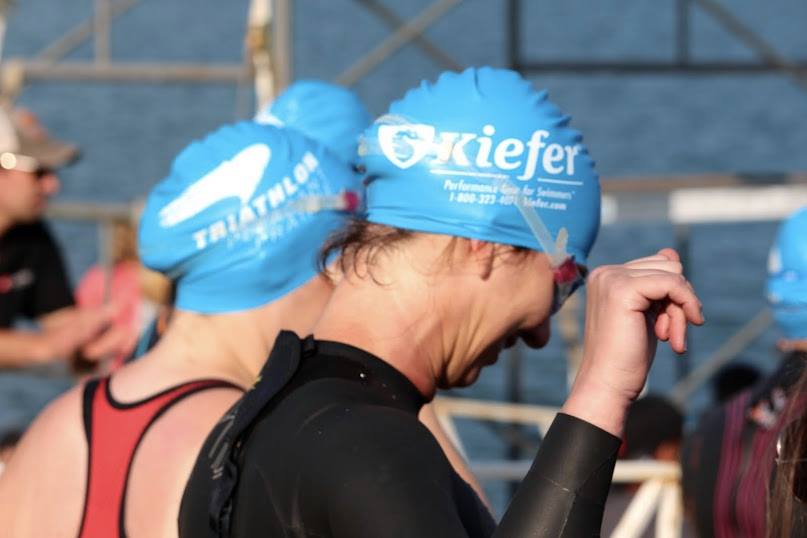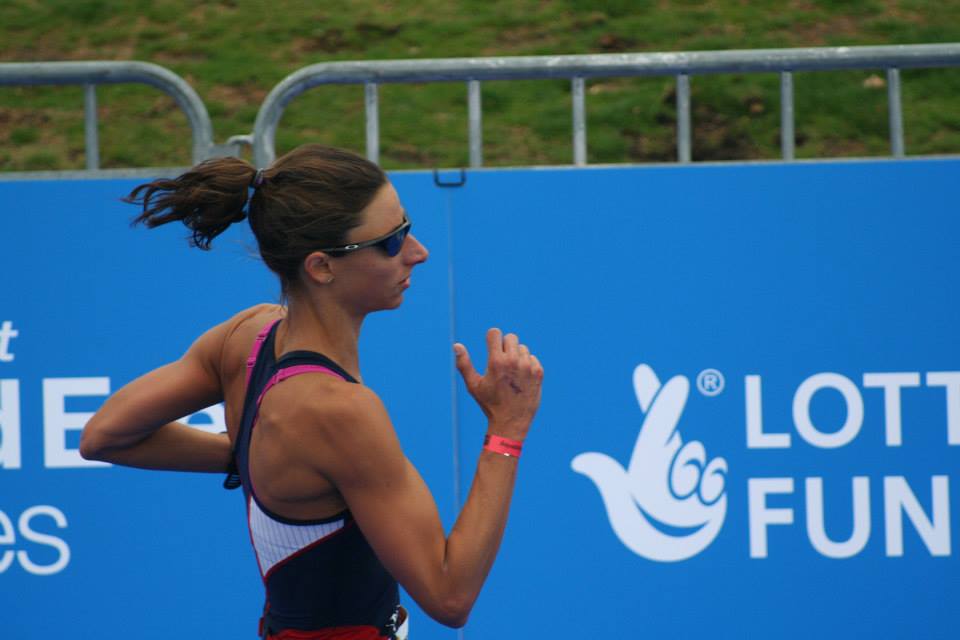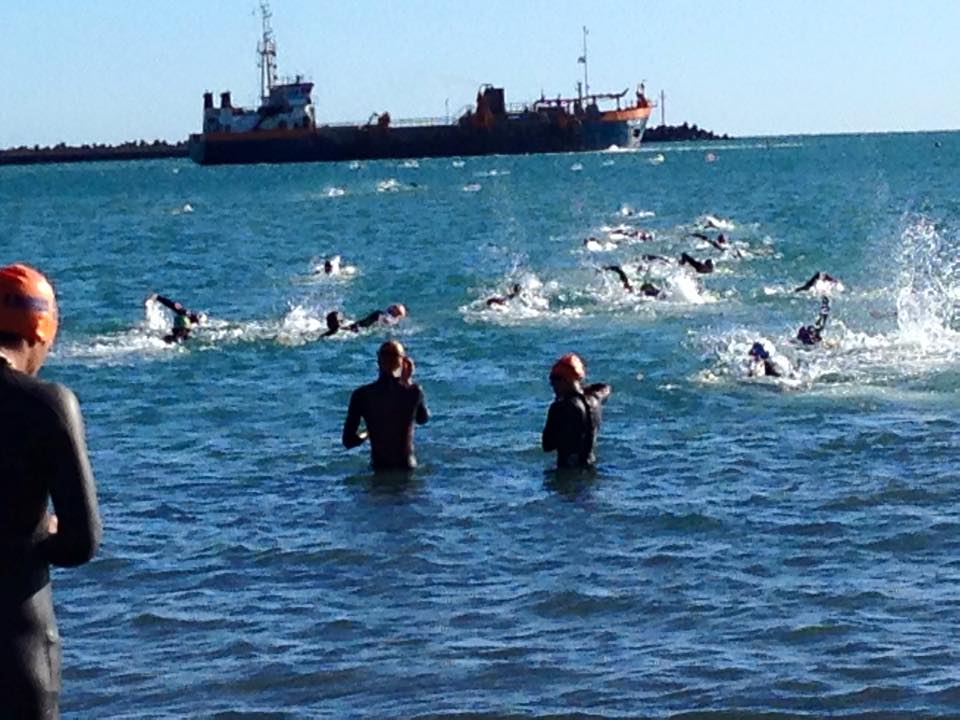It might not seem like it if you’re in the northeast and digging yourself out from under three feet of snow, but Spring is just around the corner. If you’re looking for an exciting challenge for 2016, you might be considering signing up for your first triathlon.
Whether you’re an accomplished runner looking to break into the bike and swim, or you’re a total newbie, this beginner’s guide will help you train for your first triathlon and cross that finish line in record time!
Check out our tips from top triathlon and endurance coaches, and set your goal to earn your finisher’s medal in your first triathlon.
Picking Your Race
The first step towards accomplishing your goal of completing a triathlon is to choose your race. There are a few factors to consider, the most important being the timing of the race (when it’s happening) and the distance of the race — Super Sprint, Sprint, Olympic, Half-Ironman or Ironman are the most common.
When it comes to picking the right distance for you, Lacy Healey, ISSA-certified personal trainer, running and triathlon coach says, “It really depends on your background in the 3 sports. If you’re totally new to all 3, I usually recommend we shoot for a sprint with a pool swim and then move from there.”
Healey elaborates that if she has “someone that has a background in 1/3 or 2/3 of the sports, we may jump them to an Olympic distance race first with a longer term goal to get to the 70.3 distance. Each athlete is different with a different set of skills and personality traits that go into their decision making. In the end, it’s all about their comfort level as well.”
Kelsey Abbott, USAT level I coach and a certified professional confidence coach agrees. When working with her athletes she says, “It totally depends on the athlete’s background” when it comes to how long they might need to prepare for a goal race.
Which brings you to your second decision on deciding which race is right for you. Pick a race date that gives you enough time to prepare and build your endurance and confidence in each of the three sports.
If you’re someone who has been swimming, biking and running regularly and simply need to put the disciplines together, you can select a race with a short training window.
In fact, Abbot says “I ‘trained’ for one to two weeks before my first sprint, but I swam in college and ran and biked for fun. I also did my first race in a mountain bike,” but because of her fitness base it was enough to get her across the finish line.
If you’re more of a beginner, or perhaps new to one of the sports — swimming is the sport that is new to most triathletes and requires time and training to build the confidence in the water — you will likely want to select a race that is between 12-16 weeks away to give you adequate time to prepare.
Abbot says the average athlete can ideally expect to complete “three training sessions per week in the swim bike and run, but some of those will be short form-focused sessions and some may be bricks” (which we’ll talk more about in a bit) to be fully trained and prepared for race day.
Check out Active.com to do a search for events near you, or visit your local running or multi-sport stores to get plugged in with the events in your area.
Triathlon Gear
Once you’ve picked your race the next step is to get stocked with the essentials that you’ll need to train — and complete — your triathlon. While there are literally hundreds of accoutrements you could ultimately invest in over time in the sport (triathletes love their toys!), there are really only a handful of things that you’ll need to get started.
Healy recommends making a list for each sport.
Hers includes:
Swim – Goggles and swim cap
Bike – Bike helmet, water bottles and cages, flat repair kit, shorts, sunglasses and an indoor bike trainer
Run – Running shoes recommended by a store that has performed a foot analysis for best fit and comfort
Abbott, who starts her list with “curiosity and a love for adventure and connection,” agrees with everything above but goes on to add the ever important “…lube. Don’t forget body glide, chamois cream or whatever you use to prevent chafing.” This is especially important in triathlon as you will be wet after your swim and don’t want to go the distance on the bike and the run with bits rubbing in uncomfortable ways.
It’s also nice to have a gadget to track your training, and metrics like speed and distance. Healey recommends that her athletes use something, “whether it’s a watch that does it all, an app on the phone, a speed sensor on the bike or a combination.”
Finally, athletes will want to think about what they will wear when they race their first Tri. Abbott says that’s one of the most common questions she gets asked. Her advice? “I highly recommend tri shorts and a tri top, but if people don’t have the funds to buy a top brand, a swim suit and tri shorts can work.”
Personally, I love Betty Designs for amazing triathlon gear for the ladies, and have also raced in Hincapie and Pearl Izumi gear and been very comfortable as well. Check out popular sites like Amazon, Trisports.com or Swim Outlet to find deals on gear.
Triathlon Training Plans
Once you’ve selected your race and assembled the gear you need to train your next step is — you guessed it — to start training!
USAT Elite Level 3-certified coach Jennifer Hutchison understands that every athlete is different, and as a beginner you might not know where to start.
She recommends considering what type of athlete you are when deciding your plan.
“Loners may do great with free online options (trinewbies.com or beginnertriathlete.com), or low cost options from Trainingpeaks, or plans with supported communities like endurance nation. Athletes that are more social would be best to seek out local tri-groups, running stores or cycling shops to find like minded folks to train with.”
How do you know which is right for you?
No matter which plan you choose, Aleks Todorova a Level 1 USATF-certified running coach and triathlete living and training in the San Francisco Bay Area says to be sure to first evaluate your background in endurance sports, and then choose a plan with those special considerations in mind from there.
Todorova says her athletes usually “come to triathlon from at least one of the three sports and have had experience with running, cycling, or swimming. These athletes should find a plan that focuses on building a base and/or teaching the other two disciplines, while honing on specific skills in the sport in which you already have experience.”
So what if you’re a total newbie without a background in endurance sports?
She recommends that you “find a plan that gradually introduces you to all three. Typically, these plans will have you doing one discipline a day, and will alternate them in a way to bake in recovery time for the muscle groups most commonly used.”
She also cautions new athletes that “the key is to look for a careful, gradual increase in training time and mileage — because doing too much too soon is quite likely to leave you injured or burned out.”
What key sessions should you include in your training?
Both Todorova and Terri Lynn Visovatti B.S., LMT, BCTMB, RockDoc, CES, CKTP-licensed massage therapist and Kinesiologist/Movement Specialist and USAT Level 1-certified coach agree that key sessions all depend on where you’re at in your training.
Visovatti says that, “Overall endurance training, strength training, and form are components of the weekly workouts that need attention” to create a balanced (and injury free!) season. As a coach focused on the big picture, she takes time to understand where an athlete is at in regards to their needs and skills, and plans key sessions around those needs.
For some, it’s time in the saddle and “…building that strength. Learning how to use the bike. The phrase ‘it’s just like riding a bike’ I laugh at now. Sure you can sit and pedal, but that’s not it! Operating the bike will build a lot of confidence.”
For others, the swim is a key part of the focus and they’re encouraged to focus on things like “…how to swim, breathe, sight, not over work the legs that will be used in 2 more sports! How not to be intimidated in the water. Swimming with others around you, possibly kicking you” and staying calm.
Todorova also recommends new athletes consider adding “brick” workouts to their training plans. A brick workout is when you do one workout directly after the other, most commonly when you do a short run right after a bike workout.
She says, “Bricks have become somewhat controversial these days, some coaches believe they are not as important as they were made out to be in the past. I am in that camp as well when it comes to experienced triathletes. But for newbie triathletes, bricks are key. It’s so important to know what to expect on the run when you are coming off a bike. We know how different your legs feel — and this is something you can only get used to with practice.”
What About Hiring a Coach?
Hiring a triathlon coach can be really benefit to a new athlete to help set you on the right path, examine your technique in each discipline, and structure your season for great performance without over training.
Jonathan Martin, ACSM-certified personal trainer, USA Track and Field-certified coach, and endurance coach at eNRG Performance says that while hiring a coach isn’t essential, it can be extremely helpful for athletes who have:
- Injury – Martin recommends you “Find a credentialed, local coach who has a good reputation and explain to them the exact nature of your injury, as well as any feedback and/or instructions from your physician or rehabilitation therapist. “
- Anxiety – “Professional multi-sport coaches are not only proficient in technical aspects of each sport, but they’re are also trained to support and counsel you in situations of fear and self-doubt,” says Martin.
- Length – If you have an endurance sports base and decide to “set the lofty goal of competing in a triathlon that will take you longer than 3 hours to complete for your first rodeo,” Martin “highly recommends you consult with a coach. The longer you’re exercising, the more physical and nutritional factors that need to be accounted for to keep you safe for the duration of the race.”
How Do You Find the Right Coach?
As a coach himself, Martin recommends taking a simple approach to finding the right coach for you. He recommends you, “Interview a few coaches, asking them a few questions, and see if your outlooks jive.”
Examples of questions could be:
1. What is your coaching style – flexible or “My way or the highway”?
2. What do you offer your clients that other coaches in the area don’t?
3. Explain how you communicate with your clients.
4. How much do you charge for your services?
You can search for licensed coaches on the USAT website, and we’ve linked every expert in this article for your convenience to get you started as well!
Clubs and Group Training
Finding a local masters swimming, running, cycling or triathlon club or group can be a great idea when deciding to train for your first race. Not only will you meet seasoned athletes with loads of great advice to share, but you’ll have a chance to make new friends who will hold you accountable for getting in your weekly training.
Visovatti says there’s nothing quite like having your training group cheer you on during a workout or come race day. She adds that a strong group or club can “help make a sometimes scary, isolating, individual sport, a little less intimidating.” For some, joining a club can “turn the “bucket list” concept of doing a triathlon, into a more regular event!”
Special Things To Consider
In addition to the gear, the training plan, and actually doing the training, the sport of triathlon has a few extra pieces to consider as you get closer to race day. To cut down on as much race anxiety as possible, be sure to plan for some of the unique aspects of the sport.
Open Water Swimming
Know ahead of time if you’ll be swimming in open water, and if that water will be salt or fresh water. Do a little research on how the race start works (mass start, rolling start, divided by age groups and genders are some examples), and be prepared for the feeling of swimming in a washing machine for the first 25-50 meters.
Hutchinson has a few extra tips for newbies who might have nerves about open water swimming. Her most important? “GET IN IT.”
Athletes “…need to experience the lack of lane lines, reduced visibility and nerves before race day. Dealing with the nerves in training will allow an athlete the chance to practice the self talk needed to survive their first race/ open water experience.”
She also says it’s a good idea to “have a safety stroke (side or back stroke) you can go to if you get overwhelmed.” That way, “You can still make forward progress while engaging in positive self talk of how awesome you are for trying the crazy sport” and get to the swim finish.
Bike Handling on Course Conditions
Another important thing to practice ahead of time are your bike handling skills. Having the training and endurance is important, but take into account any special course considerations.
Are there narrow U-turns on your course? Is it known for being a particularly windy or rainy race? Are there any steep hills?
Be sure that you include training rides that will simulate your race day as best as possible and be comfortable and confident with navigating the course.
Running off the Bike
As we discussed above, for new athletes it can be a good idea to add brick workouts into your training plan at about 6 weeks out from race day to get your body used to how it feels to run off the bike. Not only will it help a bit with your conditioning, it will give you a really clear mental picture of what to expect, how it should feel, and you’ll be able to pace yourself and work through the discomfort without any negative thoughts getting in the way of a great race!
Martin recommends trying this simple, yet effective workout (or one like it) a few times before race day:
* Warm-up – 10 minute easy run or 20 minute easy bike
Main Set – 2 sets of:
* Bike: 20 minute moderate, dismount and immediately put on running shoes.
* Run: 1 min hard, 5 minute easy-moderate, then replace cycling shoes and hop back onto your bike.
* Cool-down – 5-10 minute easy run
Total: 60-75 minutes – adjust times based on race distance if needed
Nutrition
There’s a saying in triathlon that goes, “nothing new on race day,” and that includes your nutrition. It would be easy to write an entire article on triathlon nutrition (and we might just do that as a follow-up to this one!), but as an overall summary you will want to practice your nutrition during your training just like you’re practicing your swim, bike and run.
Depending on the length of your race you will need to find the right combination of water, gels, sports drinks, food and electrolytes that allow you to race without running out of energy or having any stomach issues.
Train how you race and you will race how you trained!
Have you decided to do a triathlon this year? What race are you planning?

